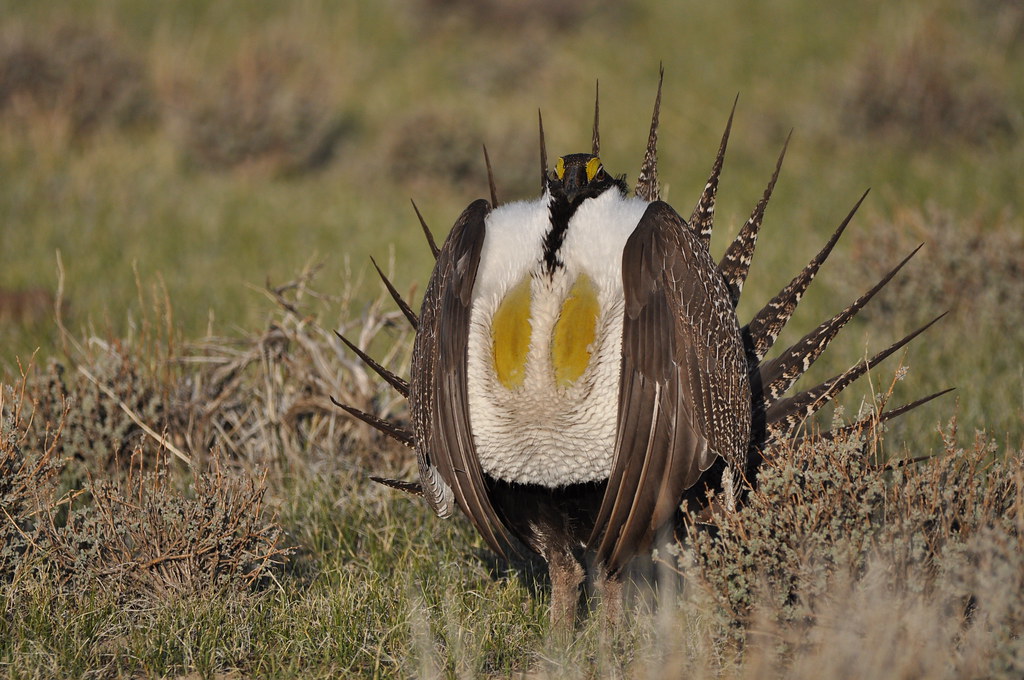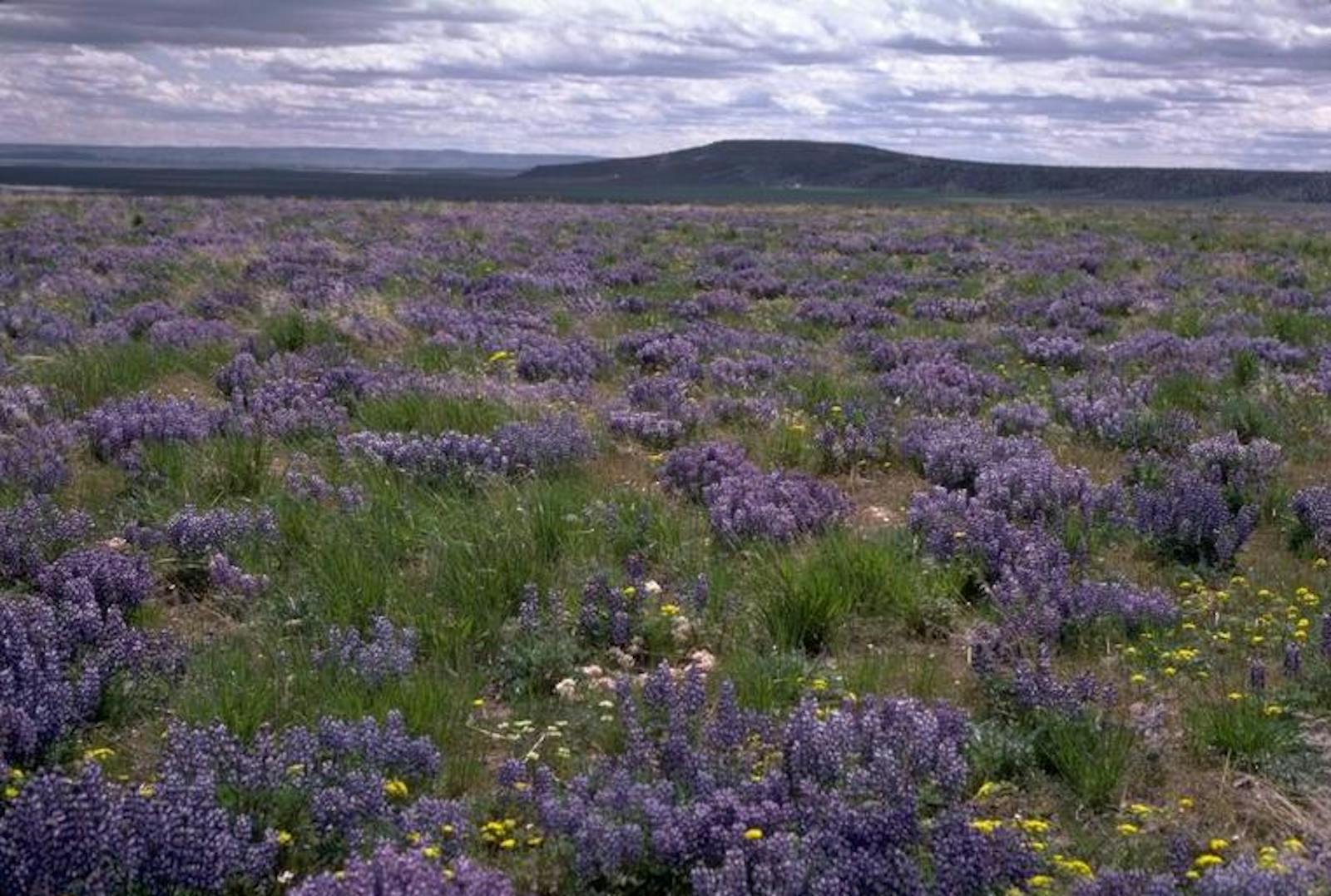Snake-Columbia Shrub Steppe
The ecoregion’s land area is provided in units of 1,000 hectares. The protection goal is the Global Safety Net (GSN1) area for the given ecoregion. The protection level indicates the percentage of the GSN goal that is currently protected on a scale of 0-10. N/A means data is not available at this time.
Bioregion: Great Basin & Columbia Steppe (NA18)
Realm: Northern America
Ecoregion Size (1000 ha):
19,330
Ecoregion ID:
434
Protection Goal:
78%
Protection Level:
2
States: United States: OR, CA, NV, ID, WY
This vast ecoregion encompasses the sagebrush steppe of southeastern Oregon, northern Nevada, extreme northeastern California, southern Idaho, and a tiny slice of western Wyoming. Much of this ecoregion, especially southeastern Oregon and northern Nevada, is often included in definitions of the Great Basin, although it is generally slightly wetter and cooler than the Great Basin Shrub Steppe.
Portions of the Snake-Columbia Shrub Steppe are relatively highly populated, especially in the Snake River Valley in Idaho, but most of the region is remote and incredibly wild. The farthest one can get from an interstate highway in the conterminous 48 states of the U.S. is Bluejoint Lake, Oregon, near the base of Poker Jim Ridge, just west of Hart Mountain National Antelope Refuge.
The “antelope” in question is not a true antelope, but a name commonly given to the pronghorn, the last surviving member of a family of mammals unique to North America. Along with the African cheetah (and presumably, the extinct American cheetah, the likely predator of the pronghorn), this is the fastest mammal on Earth, running at speeds approaching 100 km per hour.
The Snake-Columbia Shrub Steppe includes a number of stunning wild landscapes shaped by past volcanic activity, including the aforementioned Hart Mountain, Sheldon National Antelope Refuge, Black Rock Desert, Steens Mountain, Snake River Birds of Prey National Conservation Area, and Craters of the Moon National Monument and Preserve. Most of the region consists of basins, playas, and wetlands punctuated by steep fault block mountains.
The climate of the Snake-Columbia Shrub Steppe is warm to hot in summer and cold in winter. Precipitation, mostly in winter, is low. The west slope of Oregon’s Steens Mountain, which peaks at 2,967 m, gets 630 mm of annual precipitation, whereas Alvord Desert, in the rain shadow to the east, gets only 180 mm. The Black Rock Desert in northeastern Nevada averages 171 mm.
The dominant native vegetation region-wide is sagebrush, especially big sagebrush, and perennial grasses such as bluebunch wheatgrass and Idaho fescue. Other shrubs include rabbitbrush, greasewood, horsebrush, and curl-leaf mountain-mahogany. Woodlands of western juniper are common.
A biological crust of fungi, lichens, cyanobacteria, mosses, and algae is usually present between clumps of shrubs and grasses, and is important for nutrient cycling, soil stability, and other ecological functions.

The flagship species of the Snake-Columbia Shrub Steppe ecoregion is the greater sage-grouse. Image credit: USFWS Pacific Region, Creative Commons
The reptilian fauna in this ecoregion is abundant and diverse, with characteristic lizards including Great Basin collared lizard, sagebrush lizard, western fence lizard, long-nosed leopard lizard, side-blotched lizard, western whiptail, desert horned lizard, and short-horned lizard.
Mammals include mule deer, bighorn sheep, pronghorn, spotted bat, pallid bat, pygmy rabbit, black-tailed jackrabbit, Townsend’s ground-squirrel, Great Basin pocket mouse, coyote, cougar, and Ord’s kangaroo rat.
Breeding birds are particularly diverse, with characteristic species including American white pelican, prairie falcon, Swainson’s hawk, ferruginous hawk, greater sage-grouse, Wilson’s phalarope, American avocet, black tern, burrowing owl, short-eared owl, common poorwill, white-throated swift, Say’s phoebe, loggerhead shrike, horned lark, rock wren, canyon wren, sage thrasher, green-tailed towhee, Brewer’s sparrow, lark sparrow, sage sparrow, western meadowlark, and yellow-headed blackbird.
Fire is an important natural process in sagebrush steppe, but was historically infrequent, on the order of 35-100 years or more between fires.
Livestock grazing, fire exclusion, and exotic species invasions have greatly altered the natural fire regime of this ecoregion. Whereas fire exclusion affected many communities historically and led to increases in western juniper, invasion of cheatgrass has made fires unnaturally frequent, killing sagebrush and even native bunchgrasses over large areas. Urban sprawl is affecting a limited area, mostly near Boise, Idaho.
Priority conservation actions for the next decade are: 1) establish new protected areas to capture roadless areas and biodiversity hotspots – designate federal Wilderness Study Areas as Wilderness; 2) improve range management and reduce stocking densities of cattle, and 3) control invasive exotic plants, especially cheatgrass, medusahead, and yellow starthistle, which have invaded much of this ecoregion.
Citations
1. Franklin, J.F., and C.T. Dyrness. 1973 (plus 1988 Supplement). Natural Vegetation of Oregon and Washington. Oregon State University Press, Corvallis.
2. Ricketts, T.H. et al. 1999. Terrestrial Ecoregions of North America: A Conservation Assessment. Island Press, Washington, D.C.
3. Trimble, S. 1989. The Sagebrush Ocean: A Natural History of the Great Basin. University of Nevada Press, Reno.


